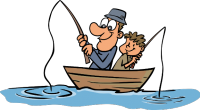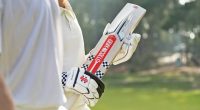A Beginner’s Guide to Understanding Driving Horse Harnesses
Horse-drawn transport is still thriving in many parts of the world despite the modern times we’re living in. It’s used in traditional farm work, competitive driving events, elegant carriage rides and much more. The driving harness is the centre of it all. This carefully designed system allows the animal to pull the vehicle comfortably and safely. If you’re new to horse driving or simply curious, understanding how a harness works is the first step in appreciating the skill and care behind the partnership between human and horse.
What’s a Driving Harness?
This harness is a set of equipment that’s used to hitch a horse to a wagon, cart, carriage or sleigh. A riding tack centers around the saddle and reins, but the driving one distributes the weight evenly and allows the horse to pull forward very efficiently. These practical and comfortable horse harnesses can vary depending on the type of driving and the number of horses.
However, they all have a common structure. There are two main types. The first one is the breastcollar type. This one is common in recreational driving and light work. It has a padded strap across the horse’s chest to make the ride more comfortable. The second one is the collar and hames harness. This one is traditional and a bit heavier and it’s used for heavy loads and farm teamwork. It includes a thick, padded collar and metal hames to distribute the weight more evenly.
Main Parts
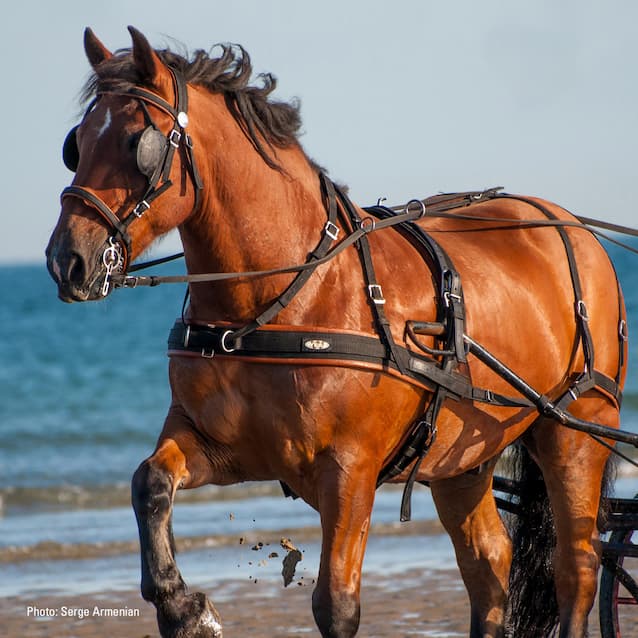
Collar or Breastcollar
This is the main pulling point of the set. The breastcollar lies across the horse’s chest, and a padded collar fits around its neck and shoulders. Which one you choose depends on the work you’re doing. If you’re going on lighter driving, use the breastcollar. If you’re doing heavy-duty work, get a collar.
Hames and Saddle (Pad)
The hames are found only with a full horse collar. These are wooden or metal arms, which are very rigid and fit over the collar. Their main purpose is to transfer the pulling force from the collar to the rest of the harness. The saddle is not the same one used for riding. The driving one rests on the horse’s back and helps with stabilizing the harness. It’s also responsible for holding up the shafts of the vehicle through shaft loops.
Girth and Breeching
The girth is the part that’s responsible for holding the saddle in place by wrapping it around the horse’s belly. Having it means that harness won’t slide while the horse moves. The breeching is a wide strap that wraps around the horse’s hindquarters. It’s there to allow the horse to slow down, stop the vehicle or even push back. This is an essential part of the set, especially when you’re going downhill or when the cart needs to stay in place.
Crupper, Backstrap and Hip Straps
A crupper is a padded loop that fits under the horse’s tail to stop the harness from slipping forward. The backstrap and hip straps run from the saddle to the breeching and crupper. They’re there to help in keeping all parts aligned and secure.
Traces, Lines, Bit and Briddle
Traces are the straps that go from the collar or hames to the vehicle. They transmit the pulling force directly from the horse to the cart or carriage. Reins or driving lines run from the bit through the rings on the saddle and into the driver’s hands. They are used to guide and control the horse. Like in riding, the bit fits into the horse’s mouth and attaches to the bridle, which includes blinders to keep the horse focused on the path ahead and reduce distractions.
Single, Pair or Team?
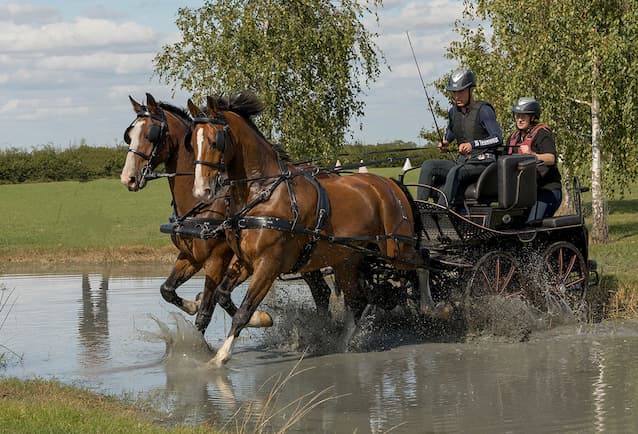
These horse harnesses are adaptable depending on how many horses are pulling a car or a carriage. The single harness is for one horse. It has a very simple structure and it’s mainly used in recreational driving and training. The pair harness is for two horses that go side by side. Each horse has a similar setup and they’re joined by a pole and some crossbars for stability and synchronization.
There are also team harnesses. They’re meant for four or more horses. This is where the setup becomes more complex compared to the other two. The setup uses leaders and wheelers with bridles and lines adjusted accordingly. But no matter the setup, each one should be carefully balanced and well fitted so the horses can be comfortable without any injuries or strains.
Why Do Fit and Quality Matter?
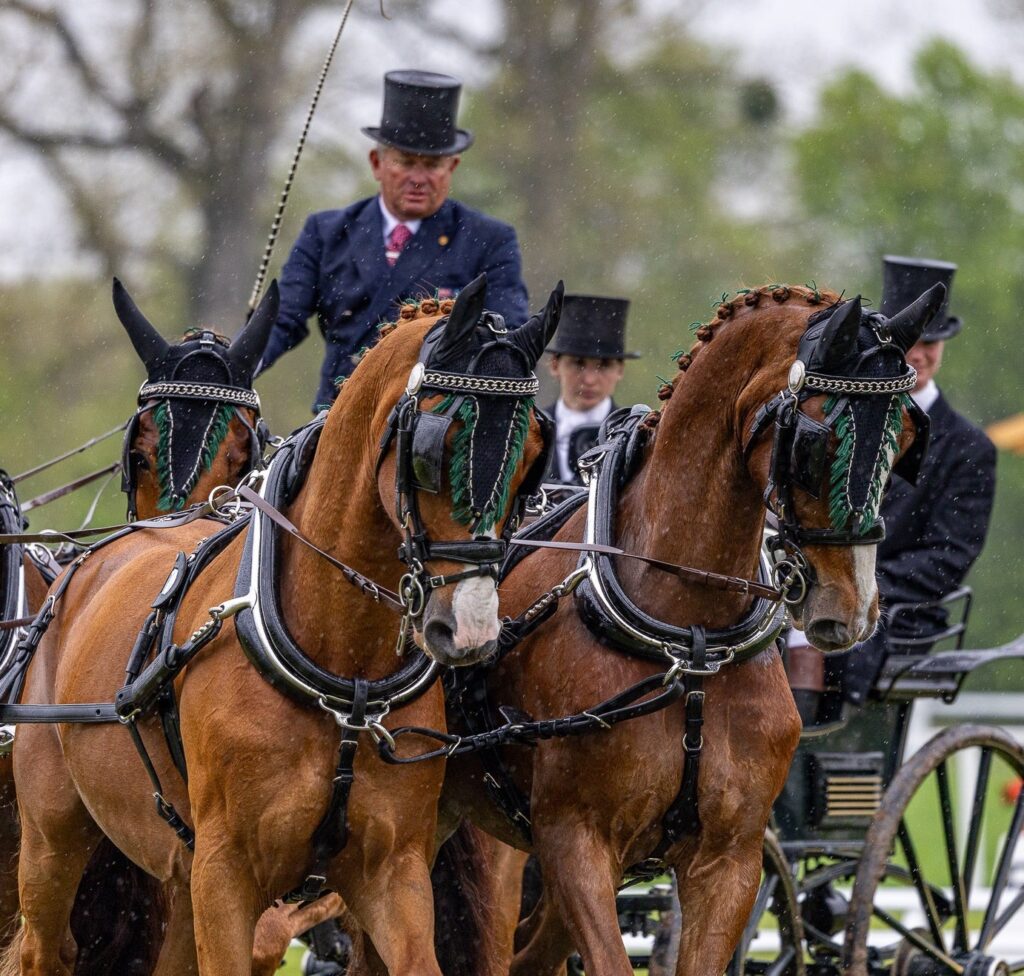
Proper harness fit is absolutely critical. If it’s ill-fitted it can be uncomfortable and even painful for the horse. It can rub, pinch or restrict its movement, leading to sores and even injury. Likewise, poorly adjusted traces or breeching can throw off the balance of the entire setup, affecting the horse’s performance and safety.
It’s worth investing in a horse harness made from quality materials like leather or strong synthetic webbing, especially if you drive regularly. Make sure you inspect, clean and maintain your setup regularly. This way you’ll prevent or recognize wear and tear and replace any possible damaged parts.
How to Get Started?
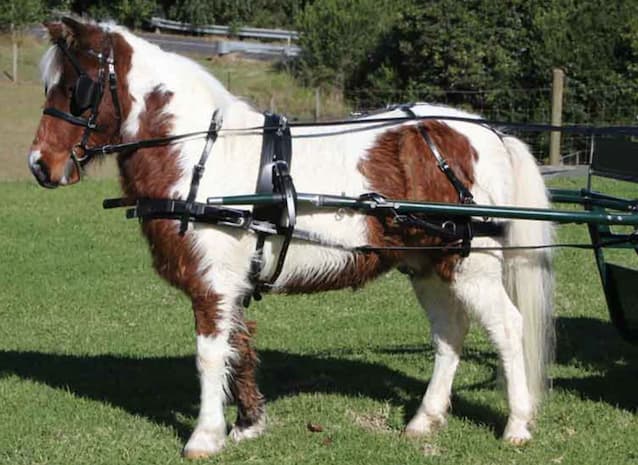
If you’re a beginner looking to get into horse driving, it’s better to get some advice and a little bit of experience first. Start by working with an experienced trainer. Learn all about how to harness and all of the safety measures. Practice with a calm and well-trained horse and use proper equipment. Driving is a very rewarding discipline once you have the basics and learn how to do it on your own.
In Summary
A driving harness isn’t just a collection of straps, it’s a precise system designed to balance power, comfort and control. Once you understand how each segment works, you’ll become a more responsible and informed driver. Take your time to learn all about it, your horse will thank you.

